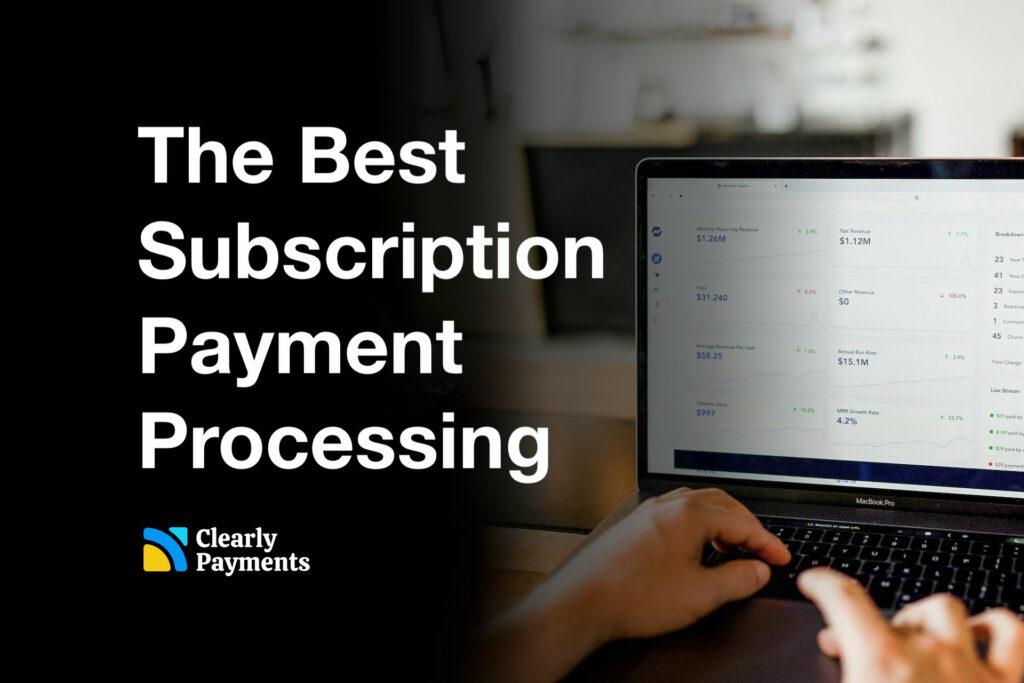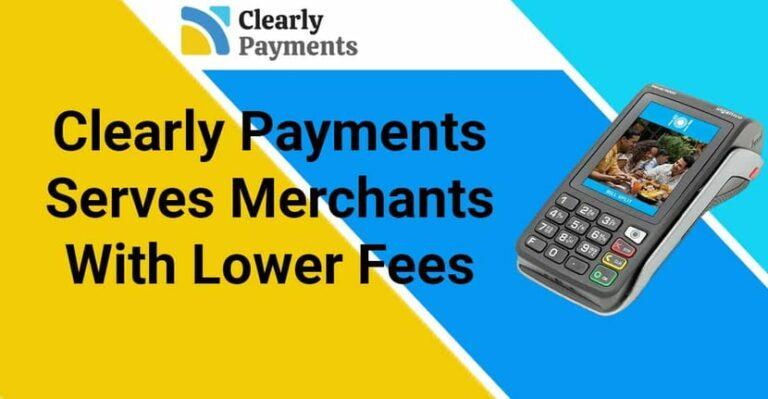Subscription payment processing refers to the handling and management of recurring payments associated with subscription-based business models. It is sometimes called other names such as: Recurring Billing, Recurring Payments, Auto-Renewal Payments, SaaS Billing (Software-as-a-Service Billing), or Subscription Management.
It involves the technology and systems required to process and collect payments from customers on a recurring basis, typically at regular intervals (e.g., weekly, monthly, quarterly, annually). Payment can be collected in the form of credit cards, debit cards, EFT/ACH, or even cryptocurrency.
The subscription payments market
The subscription billing market has been expanding rapidly due to companies moving to monthly or other recurring fees across various industries. The proliferation of digital technologies and internet connectivity has paved the way for subscription-based businesses. Companies in sectors such as software-as-a-service (SaaS), media and entertainment, eCommerce, and consumer goods have embraced subscription models to offer their products and services.
The global subscription payments and recurring billing market size is estimated at $6.89 billion USD for 2022 and $7.99 billion USD in 2023. It is projected to grow at a compound annual growth rate (CAGR) of 16.1% to reach $22.77 billion USD by 2030. These figures indicate the market’s potential for growth and its increasing importance in the business landscape.
Subscription payments provide businesses with stable and predictable revenue streams. This predictability enables better financial planning, investment in long-term growth, and reduced reliance on one-time transactions. Businesses can also optimize their pricing strategies and offer tiered subscription plans to capture a wider range of customers.
Subscription models also generate a wealth of customer data, which businesses can analyze to gain valuable insights. By understanding customer behaviour, preferences, and consumption patterns, companies can make data-driven decisions, refine their offerings, and personalize experiences, ultimately driving customer retention and revenue growth.
Types of companies that use subscription payments
Subscription payment processing is utilized by a wide range of companies across various industries. Here are some common types and categories of companies that often rely on subscription payment processing:
Software-as-a-Service (SaaS) Companies: SaaS businesses provide cloud-based software solutions on a subscription basis. Examples include productivity tools, customer relationship management (CRM) platforms, accounting systems, project management software, and communication tools.
Media and Entertainment Services: Streaming platforms, such as video-on-demand services (Netflix, Hulu), music streaming services (Spotify, Apple Music), and digital news subscriptions (The New York Times, The Washington Post), use subscription payment processing to collect recurring fees from subscribers.
eCommerce and Subscription Box Services: Online retailers and subscription box companies offer products or curated boxes on a recurring basis. This includes categories such as beauty and grooming products, meal kits, pet supplies, and clothing subscriptions.
Digital Content Providers: Platforms that offer access to digital content, such as e-books, audiobooks, online courses, and digital magazines, often utilize subscription payment processing to charge users for ongoing access to the content library.
Telecommunications and Internet Services: Telecom companies offering mobile phone plans, internet service providers (ISPs), and cable/satellite TV providers frequently employ subscription payment processing to manage recurring billing for their services.
Health and Fitness Companies: Subscription-based fitness apps, online fitness programs, and wellness platforms use subscription payment processing to collect recurring fees from subscribers for access to workout videos, personalized fitness plans, and health tracking features.
Professional Services and Memberships: Companies in fields like consulting, legal services, accounting, and marketing may offer subscription-based services to clients. Additionally, membership-based organizations and associations often rely on subscription payment processing to manage recurring membership fees.
Gaming and Software Subscriptions: Gaming companies with subscription models, such as massively multiplayer online games (MMOs), cloud gaming services (e.g., Xbox Game Pass), and software subscription services (e.g., Adobe Creative Cloud), utilize subscription payment processing to charge users for ongoing access or additional features.
Financial Services: Some financial institutions and fintech companies offer subscription-based services like budgeting tools, investment platforms, and financial advisory services that require recurring payment processing.
These are just a few examples, and subscription payment processing can be found in many other industries and business models. The popularity of subscription-based models continues to grow, leading to an increasing number of companies adopting subscription payment processing to manage their recurring revenue streams.
Key features of subscription payments platforms
Subscription payment processing platforms typically offer a range of features to support businesses in managing recurring payments efficiently and effectively. Here are some key features commonly found in subscription payment processing solutions:
Recurring Billing: The ability to set up and automate recurring billing cycles based on the subscription terms, such as monthly, quarterly, or annual payments. This feature ensures that payments are collected automatically from customers at the appropriate intervals.
Flexible Payment Options: Support for multiple payment methods, including credit cards, debit cards, digital wallets (e.g. Apple Pay), and direct bank transfers. Providing diverse payment options allows customers to choose their preferred method, improving convenience and increasing the likelihood of successful payments.
Subscription Management: Tools to manage and track subscriptions throughout their lifecycle. This includes features such as subscription creation, modification, and cancellation, as well as the ability to upgrade or downgrade subscription plans.
Dunning and Retry Logic: Dunning management features help handle failed payments or declined transactions. The system can automatically send notifications to customers about payment issues, provide them with opportunities to update payment information, and retry failed transactions at specified intervals.
Payment Gateway Integration: Integration with a reliable payment gateway that securely handles the transmission of payment information and ensures compliance with payment card industry standards (PCI DSS).
Customer Self-Service Portal: A customer-facing portal where subscribers can manage their subscriptions, view billing history, update payment details, and make changes to their subscription plans. This feature empowers customers to have control over their subscriptions and reduces support inquiries.
Analytics and Reporting: Built-in reporting and analytics tools that provide insights into subscription metrics, such as revenue, churn rates, customer retention, and payment success rates. These insights help businesses assess the health of their subscription business, identify trends, and make data-driven decisions.
Integration with CRM and Accounting Systems: Seamless integration with customer relationship management (CRM) systems, accounting software, and other relevant business tools. This integration ensures the smooth flow of customer data, payment information, and financial records across various platforms.
Security and Compliance: Robust security measures to protect sensitive customer data and ensure compliance with industry standards and regulations, such as PCI DSS. Encryption, tokenization, and other security practices help safeguard payment information and mitigate the risk of data breaches.
Scalability and Customization: The ability to scale and accommodate a growing subscriber base, as well as customization options to adapt the subscription payment processing platform to specific business needs and branding requirements.
These features collectively enable businesses to streamline the subscription payment process, enhance customer experience, improve cash flow, and maintain accurate records of recurring revenue.
Choosing the best subscription payments platform
When choosing the best subscription payment processing solution for your business, it’s important to follow a structured approach. Start by understanding your specific business needs, considering factors such as transaction volume, payment frequency, scalability, and required features.
Assess the payment methods supported by the solution to ensure they align with your customers’ preferences. Pay close attention to security and compliance, looking for solutions that meet industry standards like PCI DSS and offer features such as encryption and tokenization.
Evaluate the integration capabilities with your existing systems, as seamless integration can streamline operations and improve data accuracy. Robust dunning and retry management capabilities are crucial to handle failed payments effectively.
Determining the best subscription payment processing platform depends on various factors, including your specific business needs, industry, scale of operations, and budget. Additionally, preferences and requirements can differ from one business to another. It’s important to evaluate multiple platforms and choose the one that aligns most closely with your specific requirements. Here are a few popular subscription payment processing platforms known for their capabilities and positive industry reputation:
-
TCM: TCM is a payment processor that offers a range of recurring billing integrations. It is focused on low-cost payment processing with direct integration to best-of-breed recurring payment systems.
-
Stripe: Stripe is a widely used payment processing platform known for its developer-friendly APIs and comprehensive features. Stripe is also focused on payments and is particularly good for merchants that process below $200,000 per year. It offers flexible subscription management, supports multiple payment methods, and provides extensive documentation and integration options.
-
Recurly: Recurly is a specialized subscription management platform that focuses on providing comprehensive subscription billing solutions. TCM integrates with Recurly for a full solution. It offers flexible pricing models, subscription lifecycle management, dunning management, and integrations with popular third-party applications.
-
Chargebee: Chargebee is a subscription management and recurring billing platform that caters to businesses of various sizes. TCM integrates with Chargebee for a full solution. It offers a range of features, including flexible billing models, subscription lifecycle management, revenue recognition, and integrations with popular business tools.
It’s important to note that the “best” platform may vary depending on your specific requirements, business model, and preferences. Carefully evaluate the features, pricing, integration options, customer support, and reputation of each platform before making a decision. Consider reaching out to the providers, requesting demos, or exploring trial periods to assess how well the platform aligns with your business needs.




